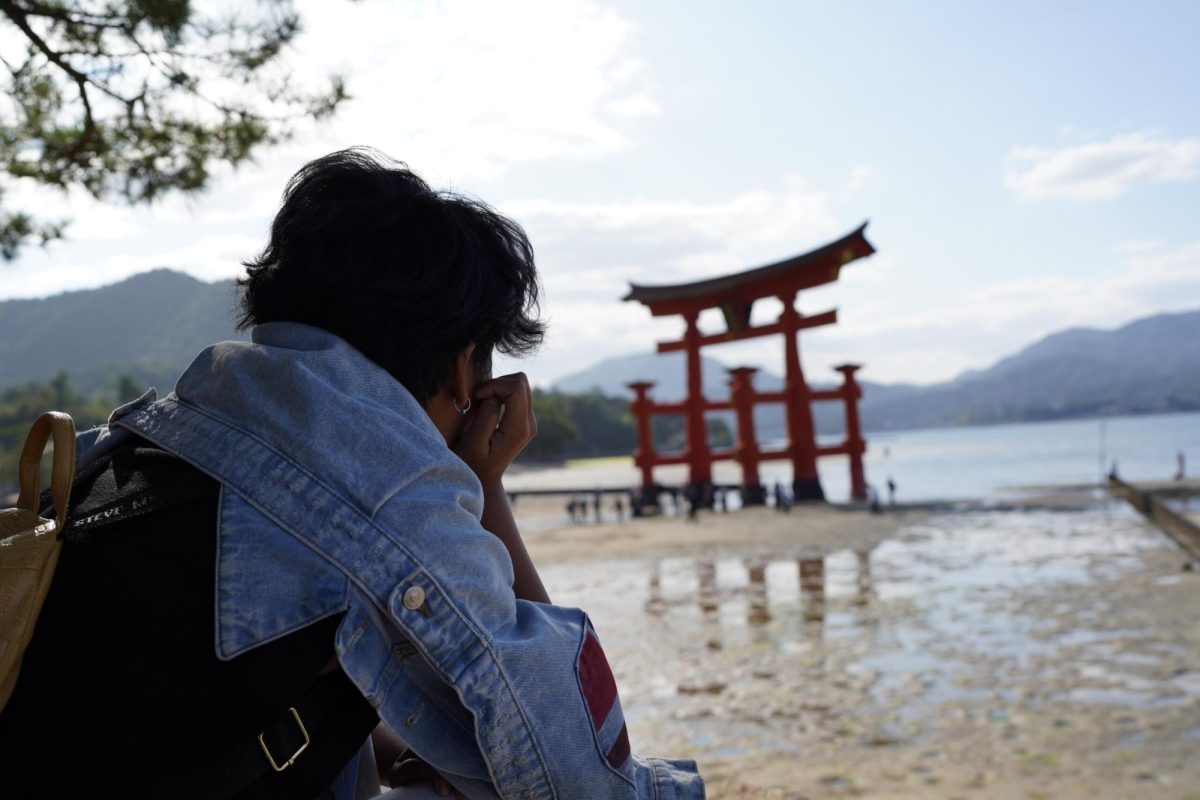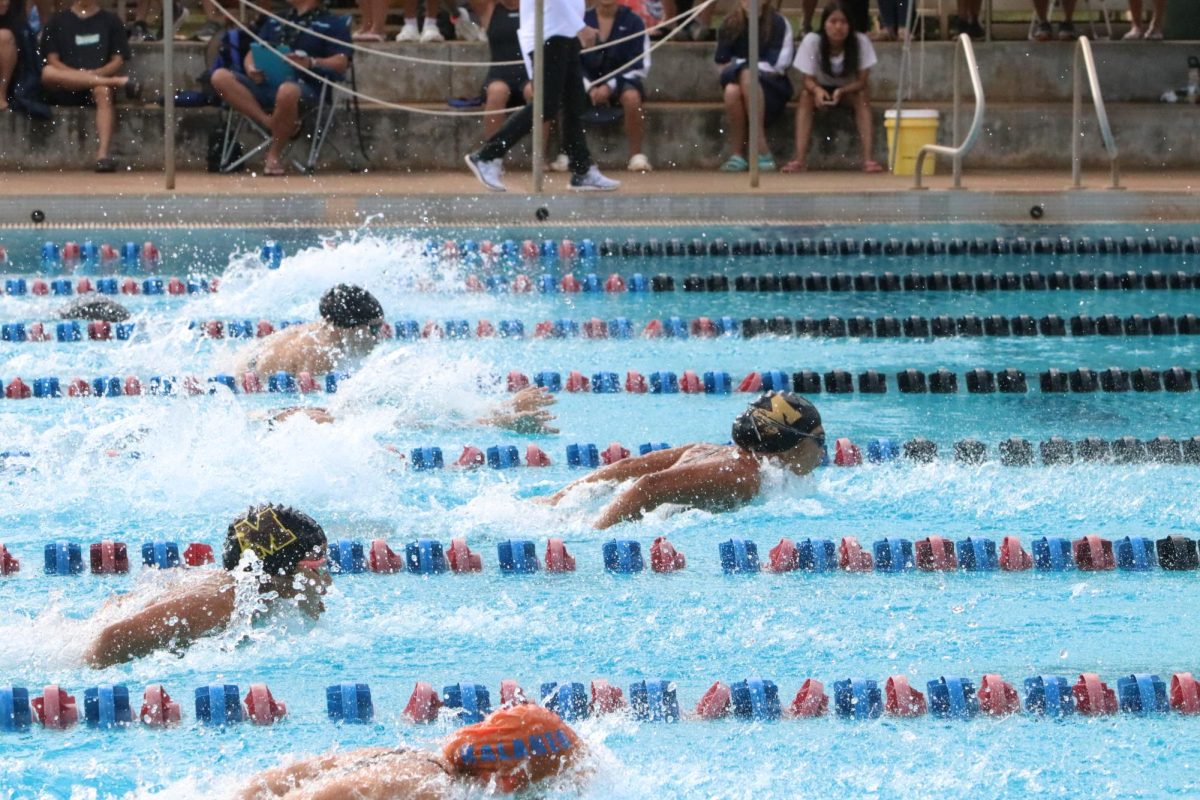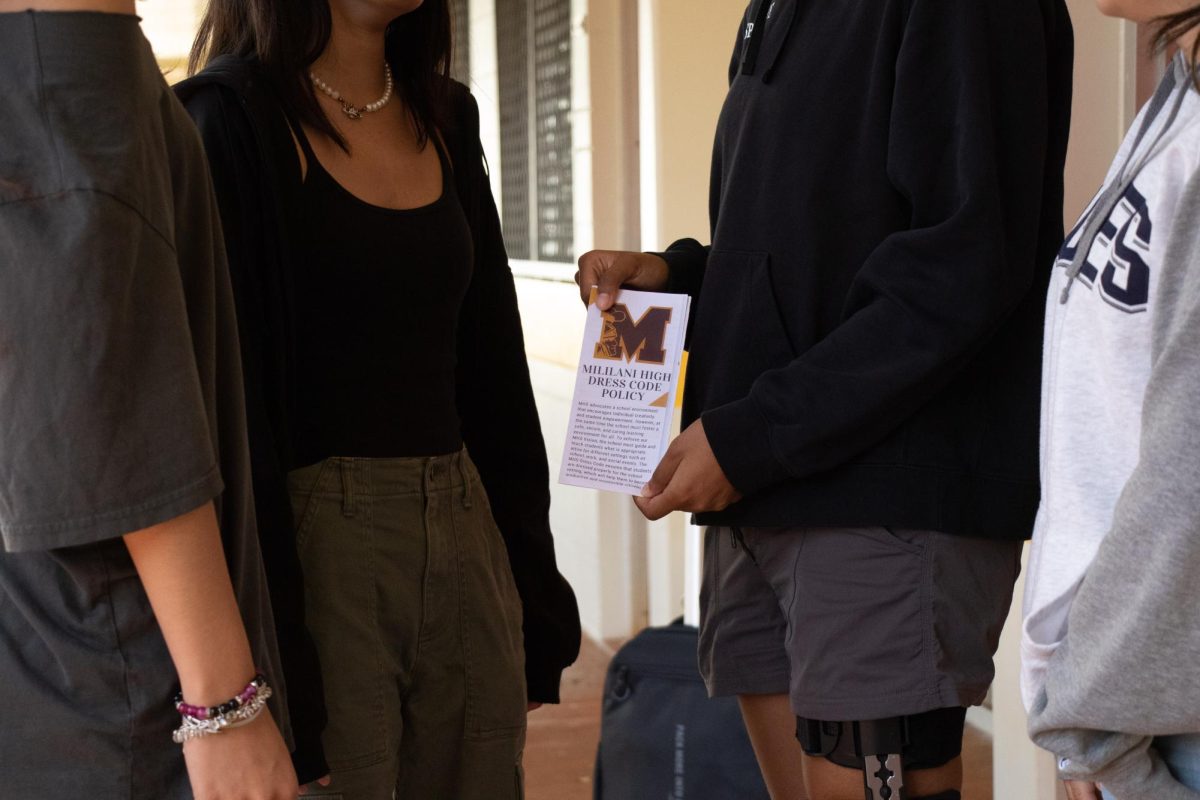Tradition, Culture, Camaraderie, Family
2017 Mililani Hongwanji Bon Dance
September 7, 2017
The arrival of summer for many in Hawaii, is a time of community, festivity, and spirituality in the form of the state’s annual bon dances. Typically held at Buddhist temples, these events, honoring the dead, often span the course of two nights, with food, dancing and games. From Aug. 18 to 19, the Mililani Hongwanji celebrated their 40th anniversary and hosted one of two bon dances in the area, where it boasted a diverse crowd.
“I think it’s wonderful that people feel free enough to dance together with other people at this festive occasion. I think that’s wonderful and I hope it continues that way. You know in this day and age, where we need to find more things to bring us together – Hawaii is the melting pot,” stated Mililani Hongwanji founder Melvin Hayase.
Traditionally, Bon Dances were rooted heavily in the Buddhist religion and was a time to celebrate one’s ancestors. However, after time and localization, the event has evolved. “You see when I grew up, bon dancing it was more traditional, and if you wanted to dance, you had to wear either kimono or happi coat, you had to have that kind of outfit on,” said Hayase. “And I think that pretty much was the rule, I know when we started the bon dance, it tended to be like that, but we made it very clear from the beginning that let’s be more welcoming, let’s let anybody who wants to dance, dance, as long as they have, you know, clothes on.”
From its establishment in 1977 to now, the Mililani Bon Dance has changed in location and magnitude—expanding its impact on the community. “We began, I think it was our first bon dance was at the (Recreation) Center One, we had it inside (Recreation) Center One, the way it is now, inside of it, we built our own yagura, the centerplace, and we kind of danced around it. That was our first bon dance,” reminisced Hayase. “So basically, that’s the change. It’s kind of grown, mushroomed into this activity that we have now. So I think that (the) bon dance has brought the community together, and all kinds of people participate in it. And I think it’s one of the major annual events here in Mililani.”
Despite changes in size, traditional aspects of the event stay fundamentally the same every year, allowing patrons both old and new to bond over shared experience. “The annual bon dance is truly a community event for multiple generations of Mililani families and their friends, as well as bon dance aficionados from all over the island, who come together to experience the friendly and family oriented Mililani community,” explained 2017 Co-Chair of the Bon Dance Committee Roger Babcock. “We provide an open air venue, free to the public to come and share in an age old cultural tradition of remembering our ancestors through music, dance, and fellowship,” added Mililani Hongwanji President Rene Mansho.
In regards to the Mililani community, the annual Bon Dance serves as a time to gather and show tolerance and respect for many demographics in the area. “We promote the concept of ‘dana’ which is unselfish giving, to do good without any expectations of receiving anything in return. People just want to live together in peace and harmony and Hawaii is the best place to bring us all as one,” affirmed Mansho. “As the president for the past two years, my vision has been to work to honor our past legacy and to seek ways to open our temple to the community in order that they may view Mililani Hongwanji as a place to appreciate Buddhism, live the values of gratitude, compassion, and promoting peace, and come and enjoy activities for all ages, all ethnicities, all religions to respect one another.”
The yagura, standing in the dead center of the Mililani Hongwanji parking lot, serves as a marker for participants to dance around. “There are many traditional Bon Dance songs played as well as newer, high-tempo songs that are very popular – like those performed live by Ewa Fukushima Bon Dance Club. These days the lighting and sound systems are improved,” said Roger Babcock, who was 2017 Co-Chair of the Bon Dance Committee. “My favorite part of the bon dance is just getting out there and joining in the joy of dancing in the crowd which looks chaotic, but is very organized as we move together in the circle following the teachers in the center. The loyal (teachers) keep us in time, and we rely on their leadership,” added Mansho.
Like the yagura, the Mililani Bon Dance stands as one of the centerpieces of the community, allowing for two colorful nights of flourishing relationships between family, friends, and neighbors. In addition to the Hongwanji, organizations such as the Mililani Judo club, Ki Aikido club, MTA, Lions, and Soroptimist volunteered their time to make the event run as smoothly as ever.
-#####-



